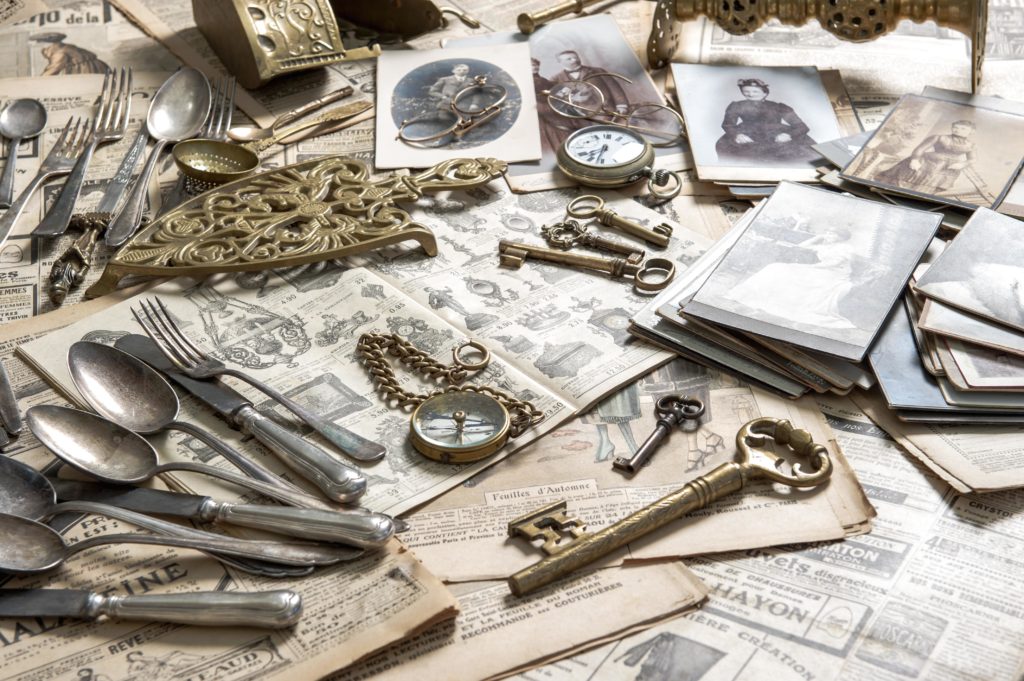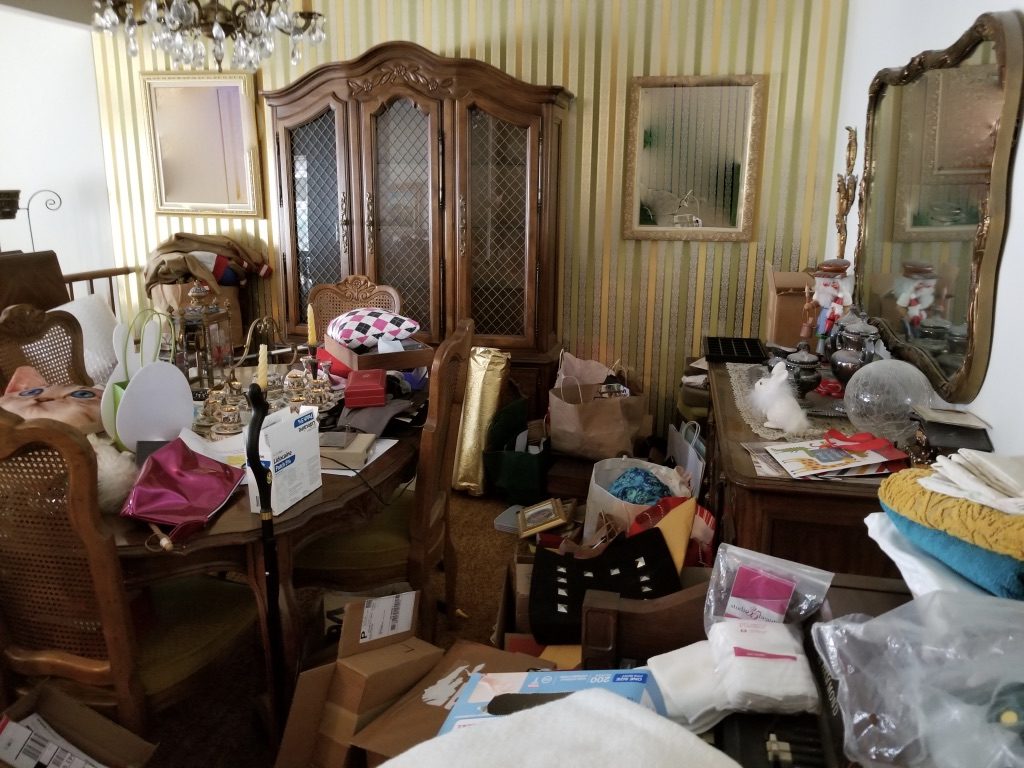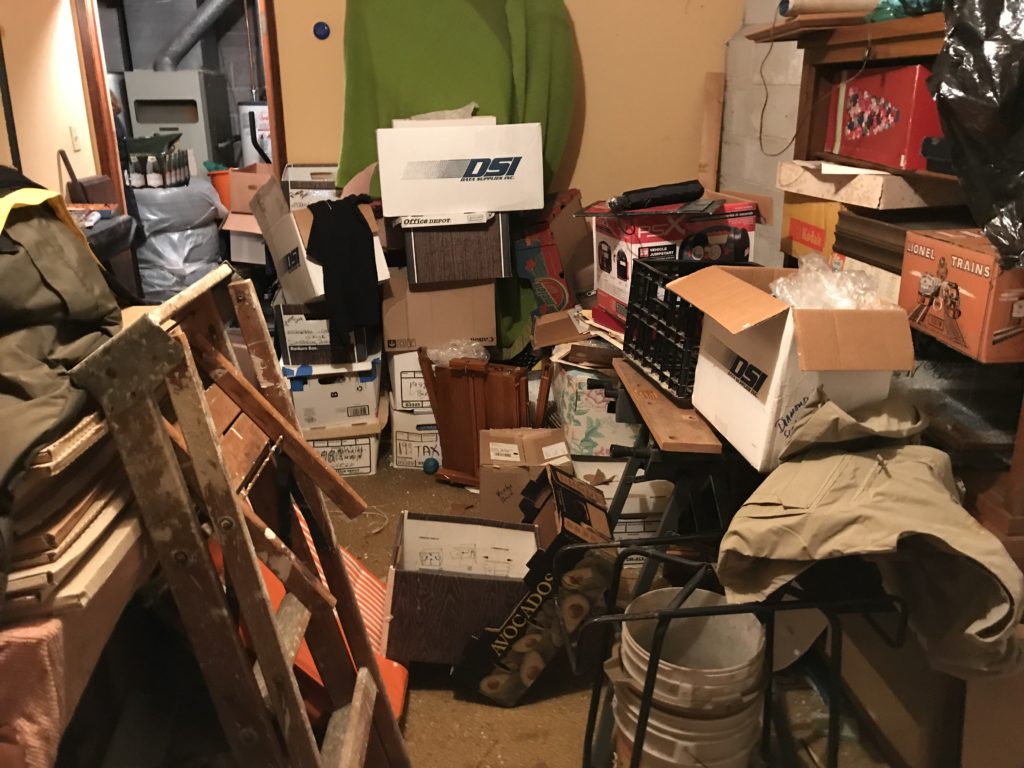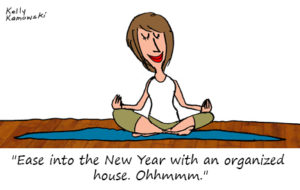The answer? It’s not because you are a collector. It’s because you don’t know why you are collecting.
Having collections in and of itself does not make you disorganized. If that were true every museum and gallery in the world would be a cluttered mess.
It’s more likely your collections need to be reviewed for their personal relevance to you the same way a museum, gallery or boutique will display and collect their collections to fit their particular vision, style or mission.
Are you collecting items that have meaning to you or are you attached to them for another reason? If your mother passed, and you have everything she ever owned, how is that honoring her memory? How does that enhance your life? Is that a collection or just a collection of stuff?
There is no such thing as the clutter-police.
No one is going to come to you and say, “you can’t get rid of that!” unless you let them. If an heirloom was given to you, you are the owner of that decision. Not the person who gave it to you. Not even your spouse or your children. Just you. If you don’t like something you were given, someone else will. I was given a gift of a cookbook from a friend but I know I will never use it. Instead I am giving it to someone who I know will love it.
You probably have more collectibles than you have room to store them. Prioritize which of those collectibles you want on display or to use yourself. The rest are just things taking up space. Consider giving them new life somewhere else as a gift or donation.
Your decision about what and how much to store, will depend on your available space and of course how much value they have to you.
Outside or external storage is like buying a house just for your things! Is that worth it to you?
You can be both “a collector” and still suffer from chronic hoarding disorder, a mental health disorder in which an individual excessively saves items that the consensus among the general public would be to view as worthless or to such excess as to render their living space uninhabitable or non-functioning.
Assuming you do not fit the criteria for hoarding disorder, (people aren’t hoarders, they have hoarding disorder) there are several possible causes of why you are disorganized.
Here are the most typical barriers to organizing your collections:
- Time. You perceive or believe you don’t have the time to get organized. You may have other more pressing or important priorities. Any organizing task, no matter how small requires some time investment. Even a minute can make a difference in how much time you spend tidying up your home. Spend a minute now, save hours later. Take a moment now and think of all the things you could do if you just had one minute to do them. For example: Hang up a coat. Toss the junk mail. Empty the dish drying rack. Empty a trash can. Can you think of more? Getting organized is a habit not an event.
- Space. You have more things than you have space for. It’s a simple equation to fix. Less stuff = more space for what you love, use and collect. There’s no getting around it. If you moved from a three-bedroom home with a cluttered garage into a two bedroom condo with no garage, you will have more stuff than you have room for. Even if you have the same amount of square footage, you will still need storage. This would include both built in storage such as closets and cabinets, as well as furniture that is built for storage. In short, you have to be willing to edit and purge what you no longer love, want or use.
- Mindset. Getting organized requires a large degree of logic, attention to detail, system thinking, creativity, physical endurance, mental focus and to put it bluntly, a willingness to do it. Inertia, whether physical or emotional (caused by depression, anxiety or attention deficits) can be a huge impediment to getting and staying organized. Untreated mental or emotional issues can lead to other more serious conditions or risks. Consult with a physician or mental health provider about whether your own mindset may be interfering with your organizing goals. If you consider yourself “chronically” disorganized, check out the public resources available from The Institute for Chronic Disorganization
- Strategies. Even with plenty of time, space and readiness, you will need to have a plan for how to tackle different types of clutter. Is it things you are trying to organize or paper? In my work with clients I approach these two types of clutter very differently. Organizing things tends to be easier for most people because their value is easier to assess, practical and emotional. People struggle more with paper out of fear and a lack of clarity about what to keep and what can be safely tossed. Explore the web or your library for tips on organizing from others and see what’s worked for them.
- Purpose. The old expression if you don’t know where you’re going, you’ll never get there is true for organizing as well. Sometimes the goal is easy, such as clearing out a house to sell or decluttering a garage enough to fit a car. Most of the time the purpose is more intangible such as a desire to feel more peace and wellbeing or a desire to feel more comfortable having people over. Ask yourself, “why do I want to do this?”
- Scope. No matter how motivated you are, sometimes an organizing task is just too big to do alone or the urgency too great. That’s when it may be time to call in ‘the troops.’ Put the word out to (nonjudgemental) friends. Reach out to local organizers in your area. Do a Google search for “professional home organizer near me.” Post a help wanted ad at your local community college for help or ask other trusted professionals in your life for a referral to a professional organizer. You can also check out the National Association of Organizing and Productivity Professionals or the National Association of Senior Move Managers. Just enter your zip-code and it will list credentialed or qualified organizing professionals near you.
Getting organizing requires a compelling purpose. What’s yours?
- Just a desire to get organized is not enough to overcome the physical and emotional barriers that may keep you stuck in clutter.
- Resolve to let go of things that no longer have value for you, even if they once did or if they were given to you by a loved one or friend.
- Explore whether your mindset or other inhibiting conditions may be keeping you from meeting your goals.
- Finally, gather your tools or more specifically your strategies. Have a plan to know what you will do in different circumstances or with different types of items. Struggle with downsizing books? Google tips on “how to organize your library.” Need help organizing your massive amount of clothing? Google “Wardrobe editing decision tree.”
Now that you know where, why, how and when, decide whether you can do it alone or if you need help. Either way, congratulate yourself for making the decision to make more room in your life for what matters most.














